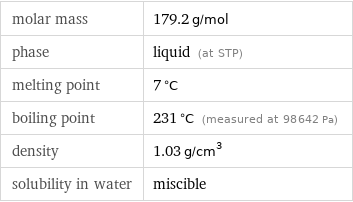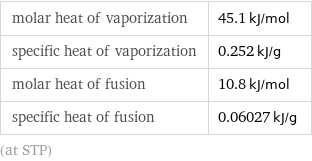Input interpretation

hexamethylphosphoric triamide
Chemical names and formulas
![formula | [(CH_3)_2N]_3PO Hill formula | C_6H_18N_3OP name | hexamethylphosphoric triamide IUPAC name | N-bis(dimethylamino)phosphoryl-N-methylmethanamine alternate names | bis(dimethylamino)phosphoryl-dimethyl-amine | hexametapol | hexamethylphosphoramide | hexamethylphosphoric acid triamide | hexamethylphosphorotriamide | HMPA | N-bis(dimethylamino)phosphoryl-N-methyl-methanamine | N-bis(dimethylamino)phosphoryl-N-methylmethanamine | tris(dimethylamino)phosphine oxide mass fractions | C (carbon) 40.2% | H (hydrogen) 10.1% | N (nitrogen) 23.4% | O (oxygen) 8.93% | P (phosphorus) 17.3%](../image_source/2afc559198bf927cf8a08846de181314.png)
formula | [(CH_3)_2N]_3PO Hill formula | C_6H_18N_3OP name | hexamethylphosphoric triamide IUPAC name | N-bis(dimethylamino)phosphoryl-N-methylmethanamine alternate names | bis(dimethylamino)phosphoryl-dimethyl-amine | hexametapol | hexamethylphosphoramide | hexamethylphosphoric acid triamide | hexamethylphosphorotriamide | HMPA | N-bis(dimethylamino)phosphoryl-N-methyl-methanamine | N-bis(dimethylamino)phosphoryl-N-methylmethanamine | tris(dimethylamino)phosphine oxide mass fractions | C (carbon) 40.2% | H (hydrogen) 10.1% | N (nitrogen) 23.4% | O (oxygen) 8.93% | P (phosphorus) 17.3%
Lewis structure

Draw the Lewis structure of hexamethylphosphoric triamide. Start by drawing the overall structure of the molecule, ignoring potential double and triple bonds: Count the total valence electrons of the carbon (n_C, val = 4), hydrogen (n_H, val = 1), nitrogen (n_N, val = 5), oxygen (n_O, val = 6), and phosphorus (n_P, val = 5) atoms: 6 n_C, val + 18 n_H, val + 3 n_N, val + n_O, val + n_P, val = 68 Calculate the number of electrons needed to completely fill the valence shells for carbon (n_C, full = 8), hydrogen (n_H, full = 2), nitrogen (n_N, full = 8), oxygen (n_O, full = 8), and phosphorus (n_P, full = 8): 6 n_C, full + 18 n_H, full + 3 n_N, full + n_O, full + n_P, full = 124 Subtracting these two numbers shows that 124 - 68 = 56 bonding electrons are needed. Each bond has two electrons, so we expect that the above diagram has all the necessary bonds. However, to minimize formal charge oxygen wants 2 bonds. Identify the atom that wants additional bonds and the number of electrons remaining on each atom: In order to minimize their formal charge, atoms with large electronegativities can force atoms with smaller electronegativities on period 3 or higher to expand their valence shells. The electronegativities of the atoms are 2.19 (phosphorus), 2.20 (hydrogen), 2.55 (carbon), 3.04 (nitrogen), and 3.44 (oxygen). Because the electronegativity of phosphorus is smaller than the electronegativity of oxygen, expand the valence shell of phosphorus to 5 bonds. Therefore we add a total of 1 bond to the diagram: Answer: | |
3D structure

3D structure
Basic properties

molar mass | 179.2 g/mol phase | liquid (at STP) melting point | 7 °C boiling point | 231 °C (measured at 98642 Pa) density | 1.03 g/cm^3 solubility in water | miscible
Units

Liquid properties (at STP)

density | 1.03 g/cm^3 vapor pressure | 0.06999 mmHg dynamic viscosity | 0.0034 Pa s (at 25 °C) refractive index | 1.459
Units

Thermodynamic properties

molar heat of vaporization | 45.1 kJ/mol specific heat of vaporization | 0.252 kJ/g molar heat of fusion | 10.8 kJ/mol specific heat of fusion | 0.06027 kJ/g (at STP)
Chemical identifiers

CAS number | 680-31-9 Beilstein number | 1099903 PubChem CID number | 12679 PubChem SID number | 24895433 SMILES identifier | CN(C)P(=O)(N(C)C)N(C)C InChI identifier | InChI=1/C6H18N3OP/c1-7(2)11(10, 8(3)4)9(5)6/h1-6H3 RTECS number | TD0875000 MDL number | MFCD00008303
NFPA label

NFPA label

NFPA health rating | 1 NFPA fire rating | 1 NFPA reactivity rating | 0
Safety properties

flash point | 105.6 °C autoignition point | 230 °C

DOT hazard class | 6.1 DOT numbers | 2810
Toxicity properties

RTECS classes | agricultural chemical and pesticide | tumorigen | mutagen | reproductive effector | primary irritant